I seem to be losing the battle against my stupidity.
This site explains the system calls under various versions of CP/M.
However, when I try to use call 2 (C_WRITE, console output), nothing much happens.
I have the following code.
ORG 100h
LD E,'a'
LD C,2
CALL 5
CALL 0
I recite this here from memory. If there are typos, rest assured they were not in the original since the file did compile and I had a COM file to start.
I am thinking the lines mean the following:
- Make sure this gets loaded at address 100h (0h to FFh being the zero page).
- Load ASCII 'a' into E register for system call 2.
- Load integer 2 into C register for system call 2.
- Make system call (JMP to system call is at address 5 in zero page).
- End program (Exit command is at address 0 in zero page).
The program starts and exits with no problems. If I remove the last command, it hangs the computer (which I guess is also expected and shows that CALL 0 works).
However, it does not print the ASCII character. (But it does print an extra new line, but the system might have done that.)
How can I get my CP/M program to do what the system call is supposed to do? What am I doing wrong?
UPDATE: The problem was that all assemblers I tried expected a certain format of the source file. This file worked with Microsoft's macro assembler:
.Z80
START: LD E,'a'
LD C,2
CALL 5
JP 0
I think (I am guessing) that asm.com (DR's assembler) and m80.com (Microsoft's macro assembler) are expecting Intel 8080 mnemonics and have to be told when they have to expect z80 mnemonics, which are apparently different.
I'll accept the answer below anyway because it is also correct since it suggests simply writing the image itself without worrying about asm.com.
